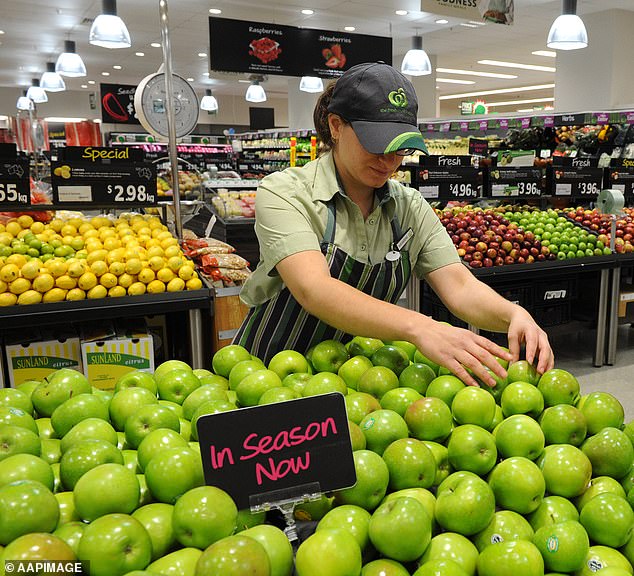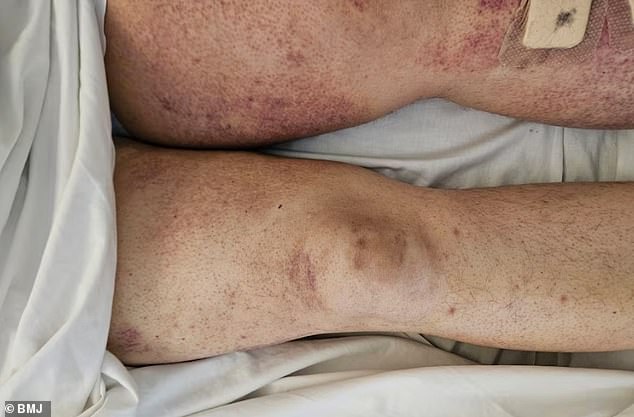Alarming reason a disease that was eradicated centuries ago is now re-emerging in Australia
Doctors have discovered the rare disease scurvy in Australia, in what a medical journal has called a possible case of ‘cost of living’.
Scurvy was largely eradicated by a healthy diet, but due to the economic crisis and stomach surgery, scurvy is returning.
A middle-aged West Australian man recently presented with the disease at Sir Charles Gairdner Hospital in Perth, the British Medical Journal reported.
The man, aged 50, showed symptoms of a painful rash, blood in the urine and anemia and told doctors he sometimes ‘skipped meals’ and ‘couldn’t afford nutritional supplements’.
“He tested negative for inflammatory, autoimmune and blood disorders and scans revealed no evidence of internal bleeding,” the BMJ said.
‘His rash continued to spread while he was in hospital and further questioning revealed that he was short on cash and neglected his diet, eating little fruit and vegetables.’
‘He said he sometimes skipped meals altogether. He had also stopped taking the nutritional supplements prescribed to him after a previous weight-loss operation because he said he could not afford them.’
‘Blood tests to assess his general nutritional status showed no detectable levels of vitamin C and very low levels of other important nutrients.’
A middle-aged man was recently admitted to Sir Charles Gairdner Hospital in Perth with the rare disease scurvy. His symptoms include a painful rash (pictured)

Scurvy is caused by a deficiency of vitamin C. Eating fresh fruits and vegetables can prevent the disease (stock image)
‘He was diagnosed with scurvy and treated with daily vitamin C (1000 mg), vitamin D3, folic acid and multivitamin supplements, after which his painful rash and other symptoms resolved.’
Scurvy is caused by a deficiency of vitamin C and is associated in popular culture with sailors of the Renaissance and early modern periods who went for months without fresh fruit or vegetables.
If the disease is not treated, it can be fatal.
It is a rare disease in developed countries due to the wide availability of nutritious food, and the BMJ authors said rising pressure on the cost of living could lead to a re-emergence of the disease.
But they also warned that the patient had other “risk factors” present that could have caused his illness.
The man had undergone gastric bypass surgery eight years earlier, which is a risk factor.
“Our patient had multiple risk factors, namely poor dietary habits, obesity, previous bariatric surgery, use of proton pump inhibitors and low income,” the BMJ report said.

Authors from the British Medical Journal say rising pressure on living costs could lead to a resurgence of scurvy (stock image)
“His history of iron, vitamin D and folic acid deficiencies were also indicative of his underlying nutritional deficiencies,” they concluded.
Other risk factors for scurvy include alcoholism, smoking, eating disorders, low household income, obesity, kidney dialysis and medications that interfere with the absorption of vitamin C, such as steroids and medications that inhibit stomach acid production.
BMJ said the prevalence of scurvy in the community was ‘not clear’.
The cost of living crisis that has hit Australia in recent years is the result of a combination of rising interest rates, energy costs and broader inflationary pressures.
Supply chain disruptions due to Covid and then the war in Ukraine in 2022 led to sharp price increases for a range of goods and services, prompting central banks to raise interest rates to curb escalating inflation.
Australians’ purchasing power has declined as a result of these pressures, although economic and employment growth have remained resilient.
